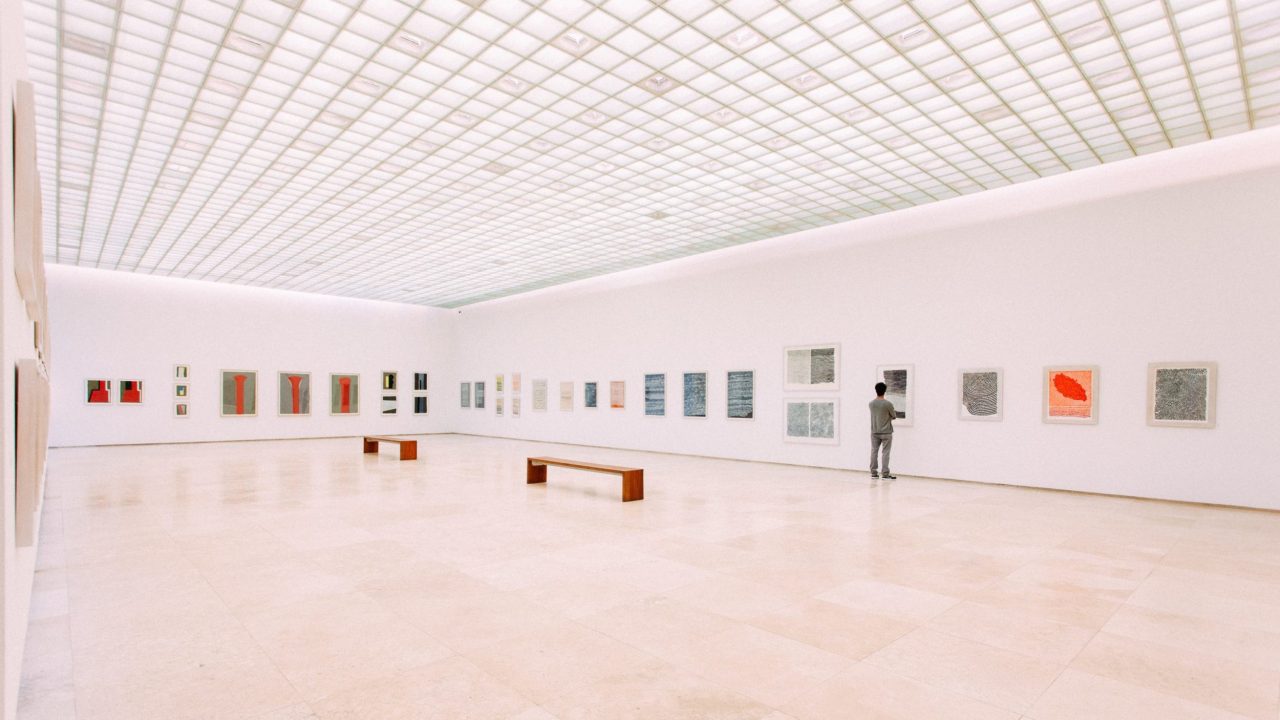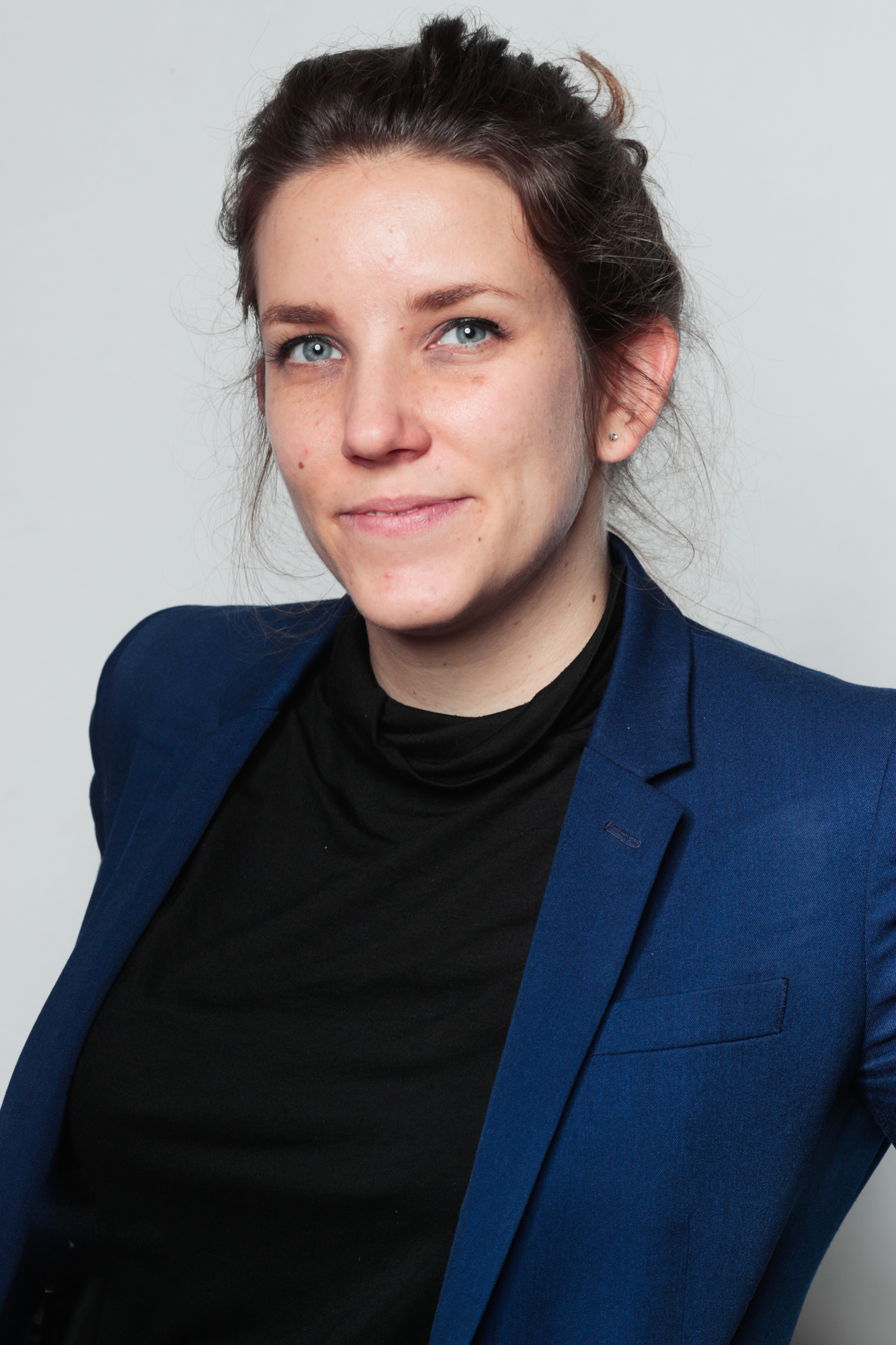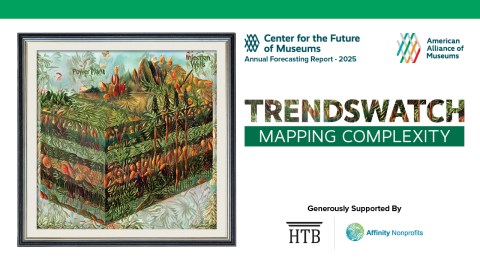
Facility management is one of the core elements of running a museum. As AAM’s core standards say, it is “incumbent upon [museums] to ensure the safety of their staff, visitors and neighbors, maintain their buildings and grounds, and minimize risk to the collections that they preserve for future generations.”
For their permanent collections, museums usually use internal documents to ensure that they have done the proper disaster planning, collections care, and staff training. When working with external institutions, though—whether in considering a temporary loan, an export license, or insurance—these documents need to be standardized and shared, in what is commonly known as a “facility report” or “facilities report,” depending on what part of the world you’re in.
The facility report provides an overview of the facilities provided by the borrowing institution, to ensure the safe display and handling of an object. It covers physical issues such as square footage, wall thickness, display cases, fire alarms, and security monitoring systems, but also procedures for handling, security, display, and maintenance. This ensures that institutions who might not work together on a regular basis can accurately understand how an object will be displayed and, in general, get an idea of how professionally the other works. It also helps lending institutions refine their loan agreements, in case they need to request special handling for their objects outside of the borrowing institution’s normal procedures. Insurance companies also benefit from facility reports, as they can use standardized risk assessments to provide more accurate, quicker premium estimates, or to identify specific risks for object owners (private or public) that need to be covered in addition to government indemnity.
The standards for facility reports have come through registrar associations in the USA, the UK, and the rest of Europe, which first developed them in the late 70s and 80s, and have rewritten them every decade since with new suggestions or amendments. The associations share templates for the reports online, which institutions fill out and share either on paper or as a digital document that they update in Microsoft Word or Adobe PDF formats. Some of the associations are currently looking to revise their facility reports, sending surveys to members and assessing the shortfalls of current techniques, which makes this a good time to reflect on the topic.
While working with loans over the past few years, I have noticed a few shortcomings with the current system, and would like to present a potential alternative that could help make it more efficient. I base my proposal not only personal experience, but also on a 2018 survey that Vastari ran about risk assessment with eighty-eight registrar respondents in multiple countries, plus qualitative interviews with registrars, shipping agents, insurance underwriters, and collectors around the world over the last two years.
In that research, we found that while facility reports continue to have broad support in the field, with nearly 75 percent of registrars in our survey saying facility reports are useful tools for assessing risks, there are some common issues with current practices. The following five questions illustrate these issues, and explain why digital tools might be a good solution for solving them.
1. Who is reading the facility report?
Facility reports include a large amount of confidential or sensitive information about an institution, which should not be accessible in any way to the general public. This information includes floorplans, information about fire exits, security systems, and so forth. It could be a goldmine for someone who would like to target museums with malicious intent.
In the past, registrars were told to shred facility reports as soon as a collaboration was completed, as all documents were shared physically on paper. Christina Kelly Schwartz, the head registrar at the Smithsonian Institution Traveling Exhibition Service, mentioned that facility reports are printed and kept under lock and key at her institution, with only certain members of staff having access.
But as digital facility reports have become more common, it has been harder to control access in this way, compared to the practices when these reports were shared on paper. Prudent museums password-protect their PDFs so that only the recipient can read it, the digital equivalent of a lock and key, but in the real world this is not the standard protocol for all museums. At Vastari, we are sometimes sent facility reports without password protection—including from large national institutions—for collectors to review.
Even when you do take the step to password-protect and encrypt a document, you still do not have a record of when and where someone reads it, and therefore it is hard to restrict who will read it. Will the broker forward it to an underwriter? Will they share it with the press, as the insurance industry did after significant damage from a fire at a private home in the Hamptons?
With improved digital tools, we can not only encrypt and password-protect a report, but also create log-ins for specific people who are authorized to access the information. We can also keep track of how many times the information was accessed, whether it was printed or screenshot, and if it was shared—all with a timestamp and an IP address.
2. What does the space really look like?
Though the associations try their best to standardize how to describe exhibition spaces in a facility report, it is extremely difficult to put down in words what the space actually looks like. For international collaborations, you can add in issues of cultural difference and translation limitations (if writing in your second language, for instance, how do you describe the architectural intricacies of a listed historic building?) and it’s a formula for true “lost-in-translation” moments.
Describing spaces is so difficult that touring exhibition teams will often physically send a representative to the venue partners, rather than expecting it to be described accurately. 46 percent of respondents to Vastari’s survey in 2018 stated that they had sent a representative to review facilities in the last thirty-six months.
The other solution is a “crossed-fingers” approach: underfunded institutions trust the information on a facility report, and fall back on knowing that they have documentation of what the space should have been like, so if something happens, they can claim on insurance that the space was different than what was described. But even if the institutions are protected, this approach puts the irreplaceable objects that museums are trying to protect at risk.
In the digital realm, it can be so much easier to describe a space! Photographs can be taken in real time, and partner institutions can ask and answer questions directly. New technologies are coming about so that creating 360 imaging, which can even be viewed in virtual reality, will be affordable and accessible.
Most importantly, these answers can then be stored for future reference. Museums no longer need to rely on mental notes taken by an employee who visits a venue, and will have an accurate, irrefutable record of what was discussed at the time if something goes wrong.
3. How often does the information actually change?
There is one very basic fact about forms: they often ask for repeat information each time you use them. Though some fields on facility report forms may not need to be reviewed or updated for each loan—like square footage, wall thickness, or the address of an institution—others do, because the object might require different conditions.
59 percent of respondents to Vastari’s 2018 survey stated that they request a facility report for every single collaboration, while 20.5 percent said they request a new facility report only if they know the partner has had some kind of significant change to their institution.
There are two main issues here: first is the more minimal issue of time wasted sharing the same information again and again, but the second is the subjective nature of assessing when the right time is to request a new report. This subjectivity, not knowing when there is likely to have been a significant change to the data, is the likely reason why more than half of institutions decide to ask for a facility report for every single loan.
In other words, the benefits of requesting information outweigh the wasted time, under the current system. But if an institution could have proof that its partner claims nothing has changed (i.e., by ticking a box or clicking a button) then the information would be up-to-date without having to spend hours on redundant data entry, or correspondence checking if a new facility report is required.
A last point to think about is that if the system was collaborative and shared, past partners would be able to flag that the conditions have changed at a museum, meaning that all subsequent museums should take this into account. (See point five for more about the sharing of data.)
4. How do you define that?
Domestically, it can be fairly straightforward to set standards on defining certain aspects of museum practice. You can decide that all spaces will be measured from baseboard to baseboard, electric sockets or AV requirements will be described in a certain shorthand, or even which suppliers will be acceptable to use for specific tasks.
But it is so much harder to define these standards across borders and across exhibition media. Even though registrars try to set a formula on how the reports should be filled in, freehand answers will stray from what the form requests. The online initiative “Matters in Media Art”—developed by New Art Trust, Tate, SFMOMA, and MOMA—even suggests that, when working on loans of new/time-based media art, an addendum be required to question handling, installation, structural, and electrical information.
With a digital solution, a document can be more versatile. Certain sections can expand depending on the media or location of the loan. One can actually add a hyperlink to the specific supplier, standard, image, or document that will be reviewed to understand what is being described and have an accurate description of the standards. Adding a hyperlink is theoretically possible in PDFs, but I have yet to find a facility report PDF that links to supplier websites and helps the reader understand what the borrowing institution means.
5. Who owns the data?
When I spoke to architect and museum specialist Dr. James Bradburne about facility reports, he mentioned that these are seen as collectively owned data. Museums share past reports they’ve received with each other in order to inform decisions on collaboration. This can make it unwieldy to privatize them and restrict who should have access to them.
This has been a point of tension when third parties have tried to develop digital facility report tools, such as when the risk-management consultant Dave Erchull helped the insurance agency AXA develop the Global Risk Assessment Survey Programme (GRASP), with more than two-thousand questions to assess if a warehouse or museum is appropriate for holding high-value or sensitive artifacts. When GRASP was first developed, it was as a co-owned resource for all insurance underwriters to fund and subscribe to, a transparent and collaborative approach that promised to be sustainable over time. But as time went on, the program was moved to be internal to AXA, with a less-clear definition of how the GRASP surveys inform the decisions made by other underwriters and of who owns the information. There was little to no governance on how this information, which museums view as collective, would be kept over time. With the recent merger between AXA and XL Catlin, the ownership and governance of this database also hangs in the balance of larger corporate forces.
Museum professionals (not just private companies like AXA) have also thought about the value of owning this collectively and sharing information. In an email exchange preparing for this article, Maxwell Anderson, President of the Souls Grown Deep Foundation and the former director of the Art Gallery of Ontario, the Whitney Museum of American Art, the Indianapolis Museum of Art, and Dallas Museum of Art admitted, “as for a collective database of facility reports, I do think that would be beneficial. Having led a years-long effort to build a collective image library of artworks across dozens of museums, the Art Museum Image Consortium, I’ve always endorsed transparency and shared data.” But where to start?
The data ownership problem has stopped Vastari from developing its own digital facility report tool, an option we were exploring in 2018. Museums have been justifiably suspicious of third-party providers helping to develop tools for such sensitive and confidential information, with examples like the GRASP program demonstrating that privately held companies will prioritize their own interests over that of the museum field. New technologies, however, can potentially allow for third-party companies to work collaboratively with museums to develop these tools, and to build rules into the software that clearly define ownership of the data. The problems may be overcome in this way. The data can be owned by whoever inputs it, or it can be distributed over several servers, with state-of-the-art distributed ledger technology (known popularly as “blockchain”).
This is a perfect example of how blockchain technology could be used in the museum field to great effect. All museum members of the network would continue to collectively own the data, just as Dr. Bradburne described in my interview with him, while being facilitated by third-party providers who can provide technological standards to the industry. The catch is that, for this to work, the field as a whole would need to understand the system, trust the process, and buy into the idea.
Lastly, the third parties who assist in this process would need some kind of earning model that the field would be comfortable with, to incentivize them to collaborate with museums. The earning model shouldn’t conflict with the goal—there is an inherent issue with insurers owning data about risk and offsetting the costs against insurance premiums. This is something that can only be developed ethically and sustainably if done in direct conversation with museum representatives, and with an honest discussion about sustainable funding mechanisms.
The case for digital facility reports
In short, digital facility reports would let museums:
- Control access and adjust visibility
- Accurately describe spaces with visual imaging
- Re-use data that’s been input before and monitor changes without wasting time
- Link to supplier websites and contact details
- Distribute data so it’s not owned by one entity
I look forward to seeing how the industry considers these benefits and whether the associations will consider these benefits in their revised strategies being published in the coming years.
Note: I hope that this article will shine some light on this big opportunity for technology in museums. If anyone is interested in access to our research and the results of our survey, please don’t hesitate to contact me.
About the author:
Bernadine Bröcker Wieder is CEO at Vastari Group, an online platform securely connecting private collectors of art, exhibition producers, venues, and museums for exhibition loans and tours. She was a founding member of the team at Trinity House gallery on Maddox Street in London, has worked with illustrators at the Traffic Creative Management agency and on museum exhibition design at Ralph Appelbaum Associates New York. Bernadine is a member of the Professional Advisors to the International Art Market, the Association of Women in the Arts and the Worshipful Company of Arts Scholars. Bernadine holds a Master’s degree in History of Art and Art-World Practice from The University of Glasgow and a Bachelor’s degree in Fine Arts from Parsons School of Design, New York. She is a young ambassador to the Museum of London, an advisor to We Are Museums, Cromwell Place, the Christie’s Employers Advisory Group and a mentor at the Founder Institute. In 2018 she was selected as 40 under 40 Europe by Apollo Magazine. Bernadine is a proponent of technological innovation for the art world, and in July 2018, Vastari helped co-organise the first Christie’s Art+Tech Summit in London, focusing on blockchain technology.






